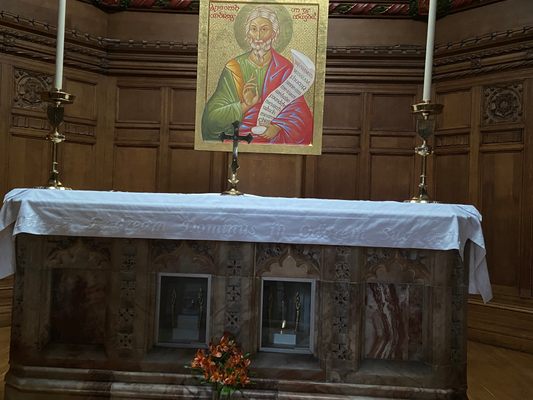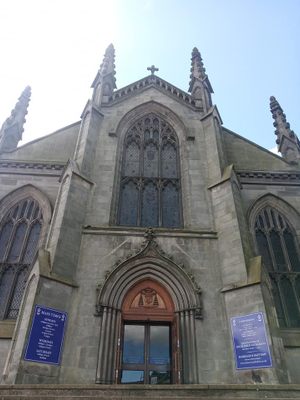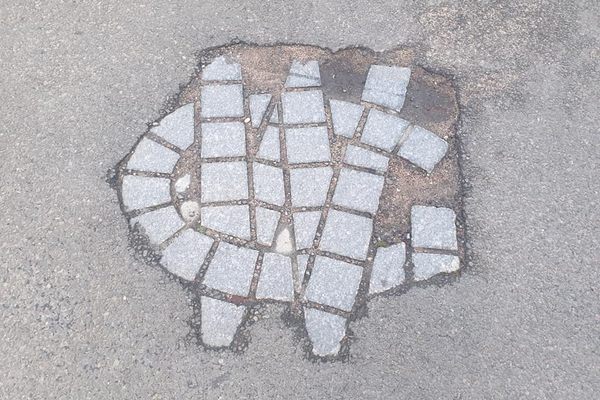About
In an ornate display, the ancient remains of Saint Andrew are located in a corner of St. Mary's Catholic Cathedral. Saint Andrew was an ancient Celt who followed Jesus Christ to become one of the original 12 apostles. He also happens to be the patron saint of Scotland , and the device he was sacrificed on is featured on the country's flag. This inverted white cross is called the Saltire, and this white "X" appears on the Union Jack, the national flag of the United Kingdom.
There are competing stories as to how these legendary relics, including; pieces of a shoulder bone, three fingers, an arm bone, a kneecap, and a tooth, of this martyred saint arrived in the nation's capital. One legend states that in 345, a Greek monk by the name of St. Regulus brought the relics to the county of Fife, which lies just to the north of Edinburgh. He is said to have enshrined these religious artifacts at what is now known as Saint Andrew/s Cathedral. This occurred after Regulus had a dream informing him to bring the bones to the "ends of the earth," for protection. There are even tales that the boat became shipwrecked along this rocky coast of Scotland. of A far less elaborate tale says that the artifacts were brought to the country in 732 by Bishop Acca of Hexham.
One story surrounding how Saint Andrew became the patron saint of Scotland dates back to the Battle of Athelstaneford in East Lothian. Prior to the battle, the Pictish king Agnus prayed to the saint for victory. After his favorable triumph, he was rewarded with a vision of the Saltire,(a crux decussate) displayed across the blue sky. This visage became the emblem embossed on the national flag of Scotland.
Saint Andrew's Cathedral became extremely popular during the Middle Ages, as pilgrims flocked to the church to worship these holy remains at the shrine dedicated to the saint. Disaster struck in 1559, when devout followers of the fire and brimstone preacher John Knox destroyed this religious institution. Luckily, several pieces of the saint's remains were preserved. In 1879, a gift of the saint's shoulder bone was given to Saint Mary's Cathedral. While on a visit in 1969, Pope Paul VI presented another relic with the words: "Peter greets his brother Andrew."
Related Tags
Know Before You Go
The Shrine is located on the right hand side of the interior of the Cathedral. As this is a fully functional facility, please be respectful when visiting. Photography is allowed, just use discretion.
Access to the shrine is only available when the church is open. It's wise to view the website beforehand to avoid disappointment and to find out when church services are happening.
Note that January 28 and November 30 are High Holy Days for Saint Andrew, and access to the shrine may be prohibited.
Community Contributors
Added By
Published
September 9, 2020




















































